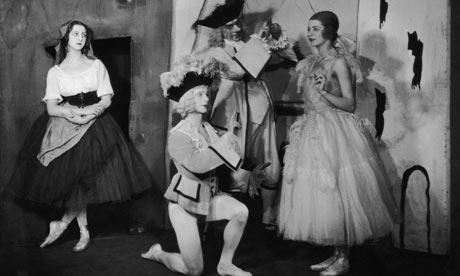In the Mind’s Eye: Images for Horns and Orchestra
Program Notes
In the Mind’s Eye is a Konzertstuck for horns and orchestra inspired by visual art. Visual artists and composers have often collaborated or have been influenced by each other’s work. A famous example of this is Stravinsky and Picasso working together on ‘Pulcinella’.
Impressionistic music occurred during the same period as impressionistic art. In a similar vein, this piece has been greatly influenced by visual art, and employs the use of musical effects that replicate various brush stroke techniques. Five paintings were used as inspiration for this three-movement work for horns and orchestra.
Movement I – Random Abstract
The first movement is dedicated to abstract expressionism artists. The specific painting that I used as inspiration in this movement is from the contemporary artist Ingrid Calame, who has used some of the concepts of abstract expressionism in her painting entitled ‘From #258 Drawing: Tracings from the Indianapolis Motor Speedway and the L.A. River’. This painting uses tire tracks from the Indianapolis 500 as its basis.
This first movement is written from two perspectives. Part of the music reflects the perspective of the artist, while other moments in the movement represent the perspective of the viewer. The opening of the first movement is a good example of the brush stroke imitation mentioned earlier. The opening glissando of the harp, followed by the fast scalar passages in the woodwinds, represent the fast, broad, stroke of a paint brush on the canvas. Jackson Pollack was known to actually paint to music and there was often a rhythm to his brush stroke. Throughout this first movement the listener will also hear short, chromatic chords that are meant to represent an abstract artist randomly throwing paint onto the canvas.
In this opening movement, the first entrance of the horns is my musical representation of a patron’s first impression upon viewing such an abstract painting. The music of the horns is meant to portray curiosity, interest, and questioning. The main second theme is music representing the painter’s perspective. The euphoria of an artist totally submerged in his or her creativity can be heard as the music grows in animation and intensity. This music, still in the voice of the artist, becomes more calm and ethereal as the artist’s mind searches for inspiration. After the artist’s inspiration is realized, the music intensifies with the return of the second theme. This pure adrenalin increases to a final climax of frantic brush strokes portrayed in the fast scalar passages now heard in strings, woodwinds, harp, and xylophone. The voice of the viewer at the art museum, who is pondering the final product of the visual artist’s work, is heard next in the solo entrance of the horn. The first movement ends from the consumer’s perspective, relishing the vivid colors and shapes on the canvas from the abstract artist’s mind.
Movement II – Daniel in the Lion’s Den
A painting of the above title by Robert E. Weaver inspires this movement. This biblical subject has been a favorite choice for many artists over the centuries. For me, Robert Weaver’s work is the most stunning of those I have seen. The music, as well as the painting, addresses the concept of faith. The movement opens quietly with the horns in a quasi-Gregorian chant, setting the stage for Daniel’s overnight trial in the den of lions where his belief in God is tested. The trials and tribulations associated with man’s faith over the millenniums are reflected in this dialogue between horns and orchestra throughout this movement in G Minor. At the end of the movement you will hear a tremolo in the strings, taking us to a moment of Eb Major, which represents the answer to Daniel’s prayers as morning arrives and Daniel has been spared from the jaws of the lions.
Movement III - Reflections
The third and final movement is meant to deal with artists’ fascination with light’s reflection, particularly on water. There are three paintings chosen as inspiration for this movement. They are ‘Roussillon Landscape’ by Georges-Daniel DeMonfried; ‘The Channel of Gravelines’ by Georges Seurat; and ‘The Regatta Beating to Windward’, by Joseph M. W. Turner. Each painting is reflected in different parts of this third movement.
The movement opens with an exciting, heroic horn call from all of the horns, representing the excitement of a sailing contest as portrayed in Turner’s painting of the Regatta.
An orchestra tutti follows this opening fanfare, where the music is very secco, representing the pointillist brush technique of Seurat’s neo-impressionistic painting.
The excitement of an ocean adventure is continued when the horns re-enter. The solo entrance of the harp transitions the music into a more tranquil section that is meant to represent the beauty of sunlight reflecting off the ocean as seen in DeMonfried’s seashore landscape.
Horn calls abound in the next section, depicting the adventure and pure beauty of water and light in these paintings. As viewers looks at these paintings, their imagination brings their own images of the ocean and reflected light. These images are heard in the music. A final return to the opening horn call signals the end of this movement climaxing in a robust celebration of life as portrayed in visual and aural art.
Instrumentation
1 Piccolo 1 Trumpet in C
2 Flutes 1 Timpani
2 Oboes 3 Percussion
1 English Horn in F 1 Harp
2 Clarinets in Bb
2 Bassoon 5 Solo Horns
Strings
Duration: Approx. 17 minutes
Mvt I (4 min 15 sec)
Mvt II (5 min 15 sec)
Mvt III (7 min)
Subscribe to:
Post Comments (Atom)






No comments:
Post a Comment